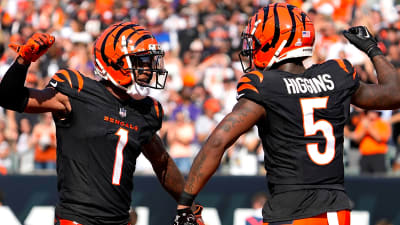
Howard Webb, Chief of the Professional Game Match Officials Limited (PGMOL), has unveiled plans for significant changes in the Premier League‘s Video Assistant Referee (VAR) system, reported by GOAL. The changes aim to address ongoing controversies and enhance transparency in officiating. Let’s delve into the details of these proposed alterations and their potential impact on the league.
Referee decision explanations
One of the key changes under consideration involves enabling referees to explain their decisions directly to stadium crowds and television audiences, particularly following consultations with the VAR monitor. This initiative seeks to provide greater clarity and transparency to fans, allowing them to understand the rationale behind officiating decisions.
Howard Webb emphasized the importance of improving the in-stadium experience and drew parallels with successful implementations observed in FIFA tournaments such as the Women’s World Cup. While the proposal awaits approval from the Premier League, its potential introduction in the 2024-25 campaign holds promise for enhancing fan engagement and understanding.
Webb said: “When you hear the clips on shows like this it makes sense what’s happening; it all becomes apparent. We’re looking at ways to improve the in-stadium experience. One of the things you’ll have seen maybe in FIFA tournaments, like the Women’s World Cup, is announcements from the referee once they’ve been to the screen. So we’re looking at that, we’re keeping an open mind about whether that’s something we could utilise in the Premier League. It would be really useful for the referee to be able to speak to all of the people in the stadium [to explain] the rationale.”
Insights from IFAB trials
The International Football Association Board (IFAB), responsible for football’s laws, conducted a successful 12-month trial of referee decision explanations in international tournaments before integrating it into the Laws of the Game. Drawing from these experiences, several leagues including Liga MX, MLS, and the Australian A-League have embraced this approach to officiating. The importance of providing explanations followed by decisions, as evidenced during the Women’s World Cup, underscores the need for clear communication between referees and audiences. However, IFAB remains firm on not making real-time conversations between VAR and on-field referees public through broadcasters, emphasizing the importance of maintaining the integrity of officiating processes.
Semiautomated Offside Technology (SAOT)
In addition to communication enhancements, Howard Webb discussed the introduction of semiautomated offside technology (SAOT) in the Premier League. This technology aims to streamline VAR decisions, particularly in offside rulings, by reducing waiting times and providing clearer visualizations of outcomes. SAOT offers higher accuracy while minimizing the risk of missed offside calls due to human error. However, its implementation may initially face delays due to technological upgrades across stadiums, potentially impacting its introduction until after the autumn international break.
“It will make us quicker in a lot of situations involving tight offsides,” Webb said. “At the moment we’re using software, dropping lines from players’ body positions, which takes time to do in a diligent way. Semiautomated offsides will speed that process up.
“There are still going to be some situations when there’s a lot of players in close proximity, where we’ll have to go through the existing system if you like. But in many, many cases it [SAOT] will speed up the offside process because we won’t have to place those lines. It’ll be done for us by the software. So we are looking forward to making use of that to speed the game up.
“Semiautomated suggests to us where the offside line is, but we still have to check the kick point — make sure the computer selected the right one, make sure it’s selected the right players because we have to recognise who is the defender that we’re interested in, make sure it’s identified the right players. And it’s just like a validation really, of what the computer is suggesting to us.
“There’s no indication [from SAOT] to the on-field officials as yet as to whether or not a player’s offside. That might be something that comes down the track, where they get some information in real time, which will prevent the delaying of flags. But that’s some way off.
“But we’re keeping a really close eye on anything that makes us more accurate, more efficient, and that benefits the game in a way that we think the VAR has overall in the last four to five years.”
Addressing VAR errors
Howard Webb also acknowledged a significant VAR error during Nottingham Forest’s match against Everton, where a missed penalty call sparked controversy. Reflecting on the incident, Webb highlighted the importance of VAR intervention in correcting clear errors made by on-field officials. While acknowledging the role of referees’ input in the decision-making process, Webb emphasized the need for VAR to independently assess footage and intervene when necessary. The incident underscores the significance of VAR in maintaining fairness and accuracy in officiating, albeit requiring continuous refinement and improvement.
“We did hear [referee] Anthony Taylor in the footage there say that he believed the ball had been played by Ashley Young, and we know that’s not the case,” Howard Webb explained. “We know only Callum Hudson-Odoi touches the ball.
“The first job of the VAR is to look at the footage available and make the judgement, ‘Was the on-field decision clearly wrong?’ You could have a situation where the referee describes that the ball has been played by the defender. But actually when the VAR looks at it, sees that’s not the case, but it’s still not a penalty. It might be that the attacker has simulated, for example.
“So you can’t only rely on what the referee is saying to make the judgement of whether something is clearly and obviously wrong. But if there’s a VAR, you’re looking at it thinking, ‘Is it clearly wrong or not?’ You can absolutely factor in what the referee says as well. And if there’s a particular aspect like, ‘Who’s played the ball?’ it’s an important aspect that can be factored in to give the confidence to the VAR that, ‘Yes, the referee needs to go to the screen because I believe this is clearly and obviously wrong.’
“And that’s what should have happened on this occasion. But primarily they’re there to look at the footage and form an opinion. Is the on-field decision clearly wrong in their professional judgement? We would have preferred such an intervention in this case.”
Potential changes for the new Premier League season
With the Premier League’s new season set to commence in August, the proposed VAR changes could usher in a new era of officiating transparency and efficiency. While some alterations may be introduced immediately, others such as SAOT might require additional time for implementation. Nevertheless, the ongoing efforts to refine and enhance VAR operations underscore the league’s commitment to delivering fair and accurate officiating for players and fans alike. As the footballing world eagerly awaits the new season, anticipation mounts for the potential impact of these proposed changes on the beautiful game.
More must-reads:
- Liverpool player Diogo Jota dies in tragic accident at 28
- Five worst signings from the first day of NHL free agency
- The 'Leading scorer by NBA franchise' quiz
Breaking News
Trending News
Customize Your Newsletter
 +
+
Get the latest news and rumors, customized to your favorite sports and teams. Emailed daily. Always free!








